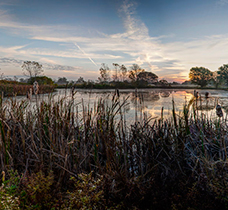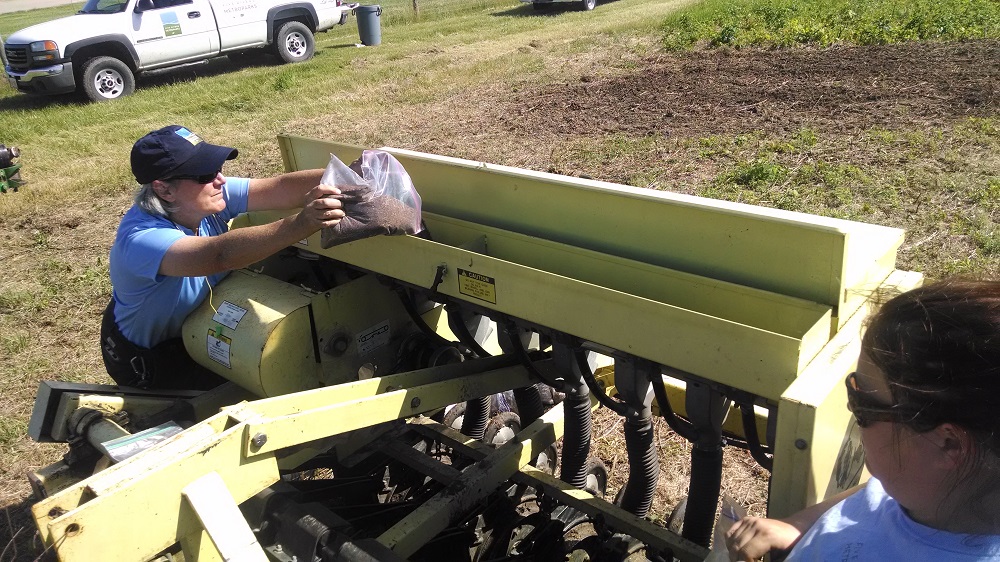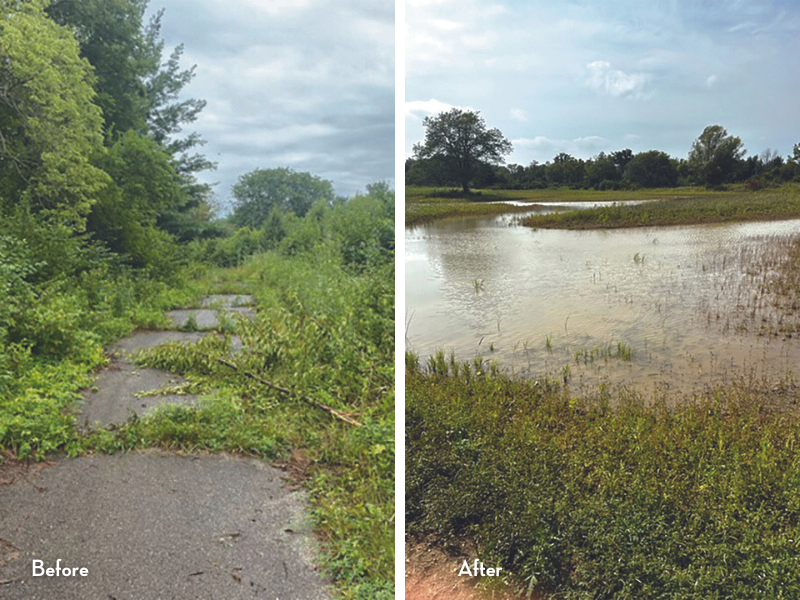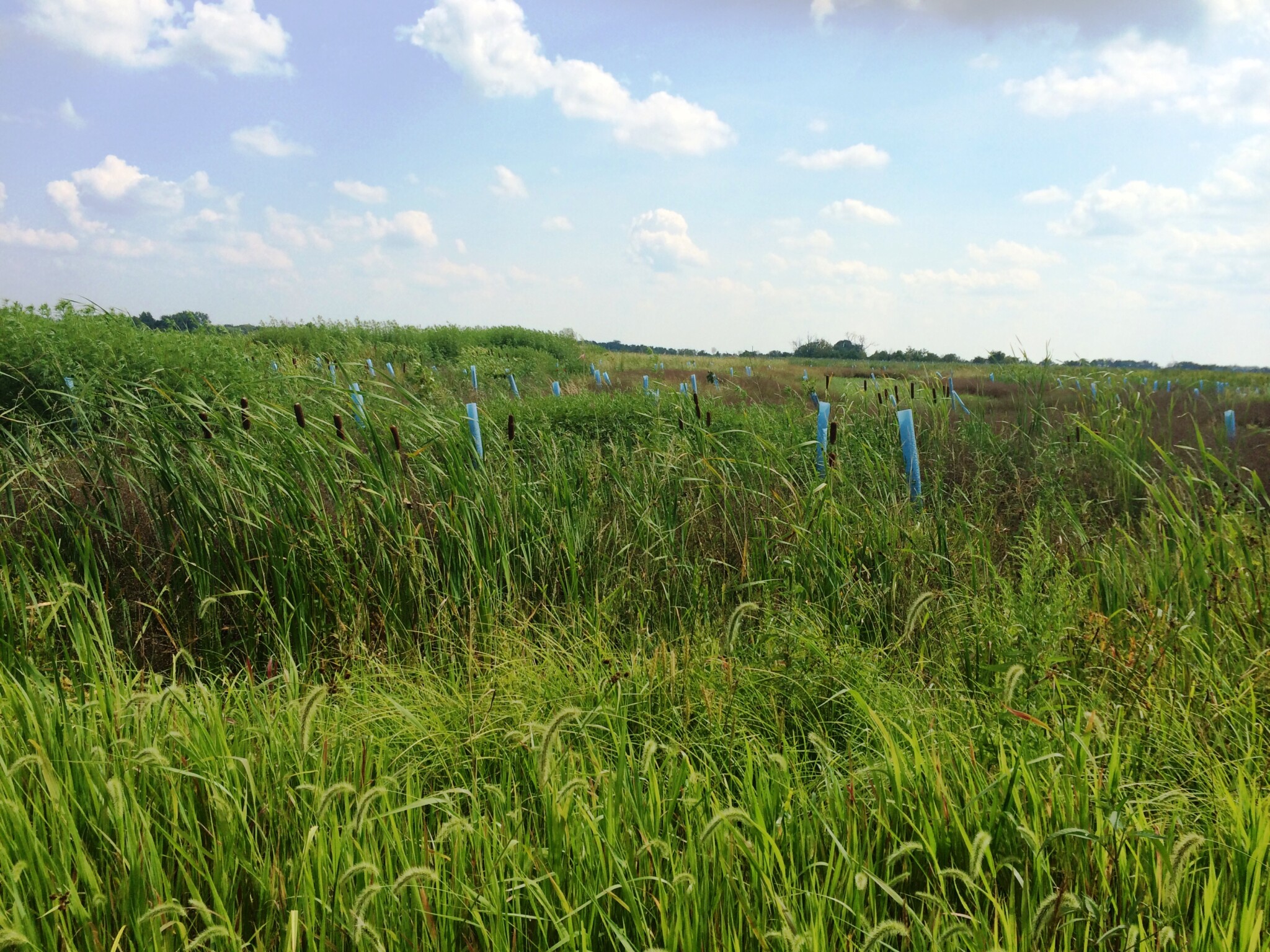Published May 11, 2017
Nature Restoration
Heads up! This article was published 7 years ago.
 When Five Rivers MetroParks purchased the former Larch Tree Golf Course in 2015, the 180-acre site had been unused for several years and was home to buildings that had fallen into disrepair. Now, those buildings have been removed, with materials salvaged when possible and the property, adjacent to the 360-acre Wetland Mitigation Bank owned by Five Rivers MetroParks and to Sycamore State Park, is a grassland habitat. Together, these natural areas create more than 3,000 acres of open space — one of the largest in the region.
When Five Rivers MetroParks purchased the former Larch Tree Golf Course in 2015, the 180-acre site had been unused for several years and was home to buildings that had fallen into disrepair. Now, those buildings have been removed, with materials salvaged when possible and the property, adjacent to the 360-acre Wetland Mitigation Bank owned by Five Rivers MetroParks and to Sycamore State Park, is a grassland habitat. Together, these natural areas create more than 3,000 acres of open space — one of the largest in the region.
The future of this critical natural area is currently being planned: A draft master plan for the former golf course and the Mitigation Bank is available for review and comment at metroparks.org/plan.
“The Larch Tree property adds a nice buffer to the wetland restoration and increases habitat for grassland birds, such as northern bobwhite quail,” said Mary Klunk, MetroParks regional conservation manager.
The Larch Tree project is one of many conservation efforts funded by a Clean Ohio grant that help MetroParks protect the region’s natural heritage.
Clean Ohio is a public-private partnership that funds projects that restore polluted and abandoned industrial sites, protect nature areas and farmland from development, and connect Ohio’s natural and urban areas through recreation trails. Five Rivers MetroParks has used Clean Ohio grant funding to expand its resources by purchasing land and conservation easements, which protects these natural areas from development, protects watersheds and creates corridors for wildlife. Funding also allows MetroParks to clean up trash sites, remove dilapidated buildings and invasive species, and plant trees and pollinator-friendly plants. These efforts create better communities for humans and wildlife.
The creation of a new prairie at Germantown MetroPark is another project funded by Clean Ohio, along with a U.S. Fish & Wildlife Service grant. The 107-acre property includes cedar groves and mature forest — along with a 60.5-acre newly planted prairie that focuses on supporting such pollinators as monarchs and honeybees. This spring, an additional 10,000 native prairie plants were sown on the property, and by August, a parking area and trail will be added to the prairie — just in time for the late-summer splendor of prairie blooms. Native shrubs and wetland plants also are being added to the property and invasive species, such as honeysuckle, are being removed.
“Already, short-eared owls and other rare birds and wildlife have been spotted on the property,” Klunk said. “The focus on pollinators at the new Germantown Prairie is not only creating a haven for butterflies, but for different types of bees and hummingbirds as well. Any time you create a biodiverse habitat, it will attract a lot of different wildlife.”
Other recent MetroParks Clean Ohio projects include:
- The Twin Creek MetroPark Woods and Wetland Preservation project includes the clean-up of a 13-acre area. This past winter, 350 tires, trash, fencing, dilapidated buildings and invasive species were removed from the land, which includes four headwater streams that flow to the Twin Creek.
- Another 13-acre project, the Stillwater Corridor Protection and Restoration at Taylorsville MetroPark, was finished in fall 2016. A run-down house and barns were removed, along with invasive honeysuckle, on this land that protects important natural areas.
- The Shiloh Woods Headwater Stream Protection project, located in a MetroParks conservation area along the Stillwater River between Wegerzyn Gardens and Englewood MetroParks, is a 22-acre parcel that protects critical headwaters. Grant funds were used to remove invasive species, and plant 500 native trees and shrubs, with the last round of work taking place this spring.
- A restoration project of 42 riparian acres along the Stillwater River between Wegerzyn Gardens and Island MetroParks was completed in December 2016. Grant funds were used to remove invasive species, particularly honeysuckle, and plant native trees to protect the river’s watershed.
- Also finished in late 2016 was the Anderson Chinquapin overlook project at Wegerzyn Gardens MetroPark. Grant funds were used to remove dilapidated buildings and plant native shrubs and prairie species on this land that protects open space, including an old Chinquapin oak, and improves wildlife corridors.
“These Clean Ohio-funded conservation projects helps MetroParks ensure the land we protect has healthy biodiversity,” Klunk said. “These projects allow us to take these areas, many of which have special habitats associated with them, back to a more natural state.”





